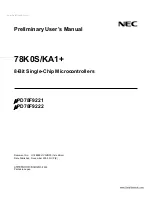
18
OPERATION
System Pressure Operation
NORMAL OPERATION — The bypass controller will mod-
ulate its damper to maintain the proper system static pressure
set point. The bypass controller does this by comparing its
pressure sensor input reading to the configured system static
pressure set point and determining the error (sensor reading —
set point). The bypass controller then compares the calculated
error to the configured deadband value. If the error is greater
than
1
/
4
of the deadband value (configured deadband times a
constant of 0.05), then the bypass controller commands the
damper to open or close (depending on the positive or negative
value of the error). If the error is less than
1
/
4
of the deadband
value, the bypass controller holds the damper position. If the
pressure sensor fails, the bypass controller will move the
damper to the configured Pressure Sensor Error Damper
Position. See Fig. 12 for an operation flow chart.
LEAVING AIR TEMPERATURE (LAT) MODE — The by-
pass controller will provide LAT protection by controlling the
system pressure based on its duct temperature. If the duct
temperature goes above the configured heating LAT limit or
below the cooling LAT limit, the bypass controller will
increase the pressure set point by the configured LAT Pressure
Delta value. This will cause the amount of bypassed air going
back to the air source to be reduced. If the LAT Pressure Delta
decision is configured for zero, the LAT protection function
will be disabled. The bypass controller will control to the
normal system pressure set point again at the end of the current
heating or cooling cycle, or when its duct temperature sensor
reads greater than the Cooling LAT limit plus five degrees or
less than the Heating LAT limit minus ten degrees. This
temperature swing would indicate that the air source cycled the
heating or cooling as part of its LAT protection, or because the
system conditions are close to satisfying the mode.
NOTE: Bypass LAT protection is disabled during Bypass
Commissioning mode, or if the duct temperature sensor fails.
Bypass Controller Calibration —
The bypass con-
troller allows calibration of the damper and pressure sensor
from the Bypass Commissioning Maintenance screen. Refer to
the System Check-Out section for the step-by-step procedure.
DAMPER CALIBRATION — If the bypass controller is not
operating in stand-alone mode, it will verify the system fan
status with its associated Linkage Controller. If the fan is on,
the bypass will request its Linkage Controller to turn the fan
off.
NOTE: If the bypass controller is in stand-alone mode (not
communicating with a Linkage Coordinator) the user must
ensure the pressure reading is zero before performing
calibration. The bypass controller will not be allowed to enter
calibration mode if the fan is on.
In either case, the bypass will check to ensure the fan is off
by reading its pressure sensor and damper position. If the
pressure reading is less than 10% of the static pressure set point
and the bypass damper position is less than 25% of the
resistance of the feedback potentiometer for greater than
60 seconds, then the bypass controller assumes the fan is off.
When the fan is off, the bypass controller will drive its damper
to the fully closed position. The bypass controller will read the
value of the actuator’s feedback potentiometer until the value
stops changing. This indicates the damper is fully closed. If
the feedback resistance value meets the Damper Closed
Criteria in Table 15, the bypass controller will store the value in
non-volatile memory as the resistance at fully closed. The
bypass controller will then position the damper fully open.
When the feedback resistance value stops changing, the bypass
controller reads the value and if the feedback resistance value
meets the Damper Open Criteria in Table 15, the bypass
controller stores the value as the resistance at fully open. The
bypass controller will use the following formula to determine
damper position:
For damper rotation configured as Open:
Damper Position (% open) = ((Feedback Resistance –
Resistance at Full Closed)/((Resistance at Full Open) –
(Resistance at Full Closed))) * 100.
For damper rotation configured as Closed:
Damper Position (% open) = 100 – ((Feedback Resistance –
Resistance at Full Closed)/((Resistance at Full Open) –
(Resistance at Full Closed))) * 100.
Table 15 — Damper Position Criteria
If an invalid resistance value is read, the bypass controller
will not store or use the value, and will issue a Damper
Calibration Alarm. If the bypass controller loses communica-
tion with its associated Linkage Coordinator, the damper
calibration process will be terminated. When the damper
calibration is completed, the bypass controller will signal the
Linkage Coordinator to return the fan to normal operation.
PRESSURE TRANSDUCER ZERO CALIBRATION —
Pressure transducer calibration will occur under two conditions
if it is not operating in stand-alone mode. The first condition is
when it is forced by the user in the BPCOMMIS maintenance
table to perform this operation. The second condition is when
the system goes in to the unoccupied mode for at least 5 minutes
or 168 hours (7 days) since the last calibration, whichever
comes first. If the bypass controller is not operating in
stand-alone mode, it will verify the system fan status with its
associated Linkage Coordinator. If the fan is on, the bypass
controller will send a high priority request to its Linkage
Coordinator to turn the fan off. If the fan is already off, the
bypass controller will send the same priority request to ensure
that the fan stays off during the calibration procedure. If for
some reason the bypass controller loses communication with its
Linkage Coordinator for more the 60 minutes or the procedure
takes longer the 60 minutes, the Linkage Coordinator will return
the fan and system to normal operation and the bypass controller
will terminate the calibration procedure and return to normal
operation.
NOTE: If the bypass is in stand-alone mode (not communicat-
ing with a Linkage Controller), the user must ensure the
pressure reading is zero before performing calibration.
DAMPER
ROTATION
CLOCKWISE
COUNTER
CLOCKWISE
Damper
Open Criteria
The resistance value is
greater than 75% of
the full range
of the potentiometer
The resistance value is
less than 25% of
the full range
of the potentiometer
Damper
Closed Criteria
The resistance value is
less than 25% of
the full range
of the potentiometer
The resistance value is
greater than 75% of
the full range
of the potentiometer
Summary of Contents for VVT 33ZC
Page 3: ...3 Fig 2 Bypass Controller Dimensions Fig 1 Bypass Controller Details...
Page 7: ...7 Fig 7 High Torque Actuator Wiring...
Page 8: ...8 Fig 8 High Torque Actuator with Linked Dampers Wiring...
Page 9: ...9 Fig 9 Field Supplied Linked Damper Wiring...
Page 10: ...10 Fig 10 Multiple Field Supplied Linked Damper Wiring...



































